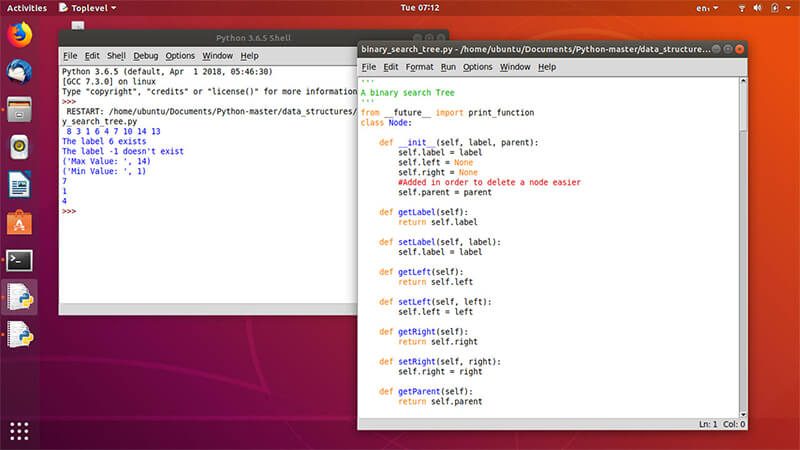
In this case, we had used requests.post instead of requests.get to get a Response object. Response = requests.post(url=server_endpoint, data=data_dict)Īs shown above, the download_file_from_server_endpoint function now accepts a server endpoint, a local file path, and a data dictionary. Given these points, we can create a Python 3 function that downloads a file from a HTTP server endpoint via HTTP POST:ĭef download_file_from_server_endpoint(server_endpoint, local_file_path, data_dict): Python 3 function that downloads a file from a HTTP server endpoint via HTTP POST Construct the HTTP POST request to send to the HTTP server.In such a situation, HTTP POST is a more appropriate HTTP method to use for downloading the file.Īs with HTTP GET, downloading of a file from the HTTP server via HTTP POST consists of the following steps:
Python download files download#
There could be cases where the client need to supply some information to the HTTP server in order to download a file. Downloading a file HTTP from a HTTP server endpoint via HTTP POST For example, if we want to download Techcoil's logo, we can call the download_file_from_server_endpoint function as follows:ĭownload_file_from_server_endpoint('', 'logo.png')Īfter the function call completes, you should find Techcoil's logo in the same directory as the Python script if your computer is connected to the Internet. Using download_file_from_server_endpoint to download a file from a HTTP server endpoint via HTTP GETĪfter we had defined the download_file_from_server_endpoint function, we can then use it to download a file from a HTTP server endpoint via HTTP GET. Inside the with statement, data is read from the HTTP response in 128-byte chunks and written to local_file.
Python download files code#
When the status code in the HTTP response is a 200 OK, a file handler is created to write binary data to the path specified by local_file_path. After the function is called, it first uses requests.get to get a Response object. With open(local_file_path, 'wb') as local_file:įor chunk in er_content(chunk_size=128):Īs shown above, the download_file_from_server_endpoint function expects a server endpoint and a local file path as input. # Write the file contents in the response to a file specified by local_file_path # Send HTTP GET request to server and attempt to receive a response Given these points, we can create a Python 3 function that downloads a file from a HTTP server endpoint via HTTP GET:ĭef download_file_from_server_endpoint(server_endpoint, local_file_path): Python 3 function that downloads a file from a HTTP server endpoint via HTTP GET



Downloading a file from a HTTP server endpoint via HTTP GET In this post, let's see how we can download a file via HTTP POST and HTTP GET.
Python download files how to#
Previously, we discussed how to upload a file and some data through HTTP multipart in Python 3 using the requests library. When you are building a HTTP client with Python 3, you could be coding it to upload a file to a HTTP server or download a file from a HTTP server. How to download a file via HTTP POST and HTTP GET with Python 3 requests library


 0 kommentar(er)
0 kommentar(er)
